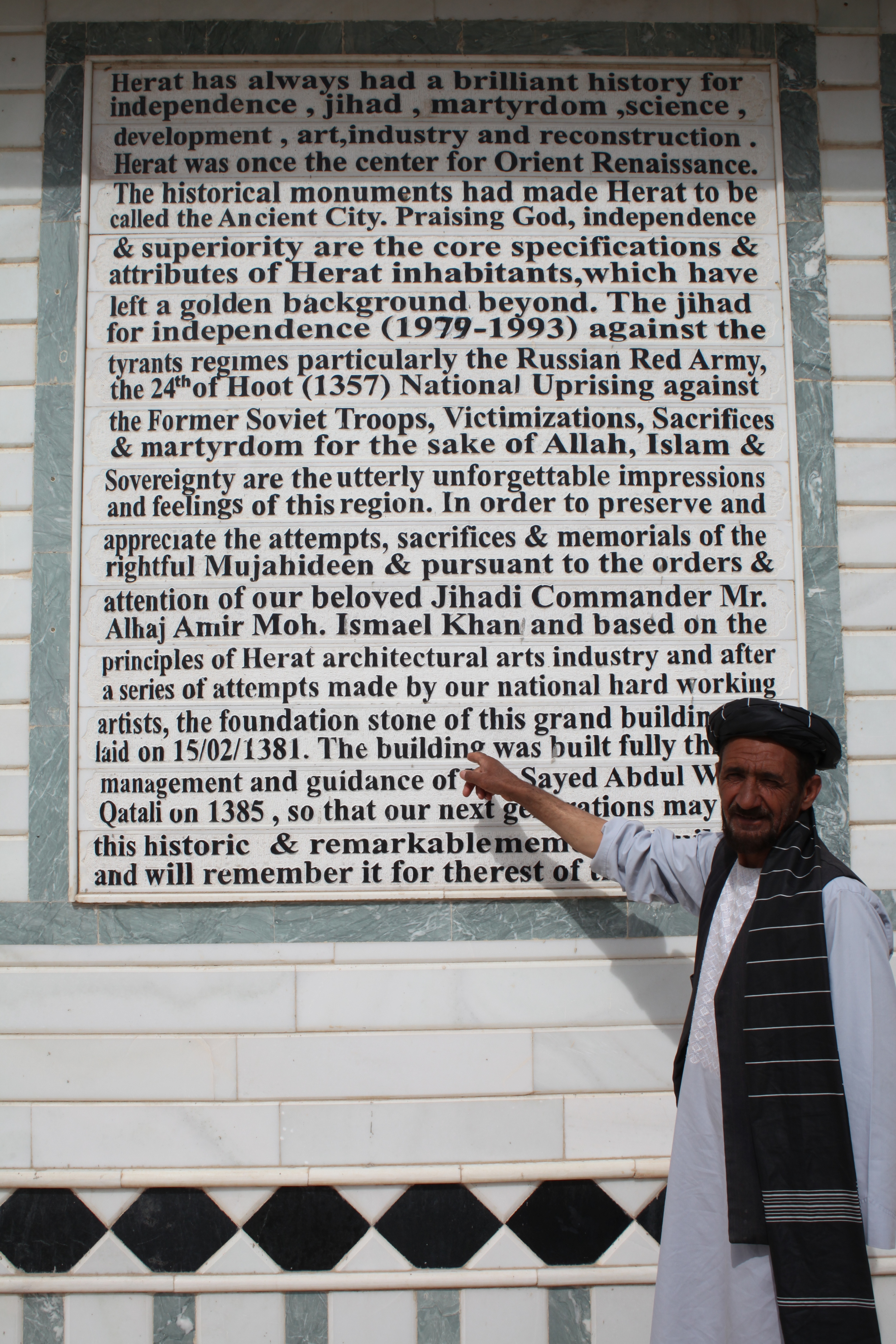
The Jihad Museum is a private museum in the capital city of Herat province. Built by a tribal leader of Herat, the museum grounds are home to a display of military weaponry ranging from the British through the Soviet occupations of Afghanistan. The interior of the museum houses a permanent installation comprised of portraits of martyrs flanking a hallway that leads into a cylindrical structure. Within this structure one can revisit the invasion through a panoramic painting and attendant terra cotta sculptures commemorating the day the communist forces invaded the city.
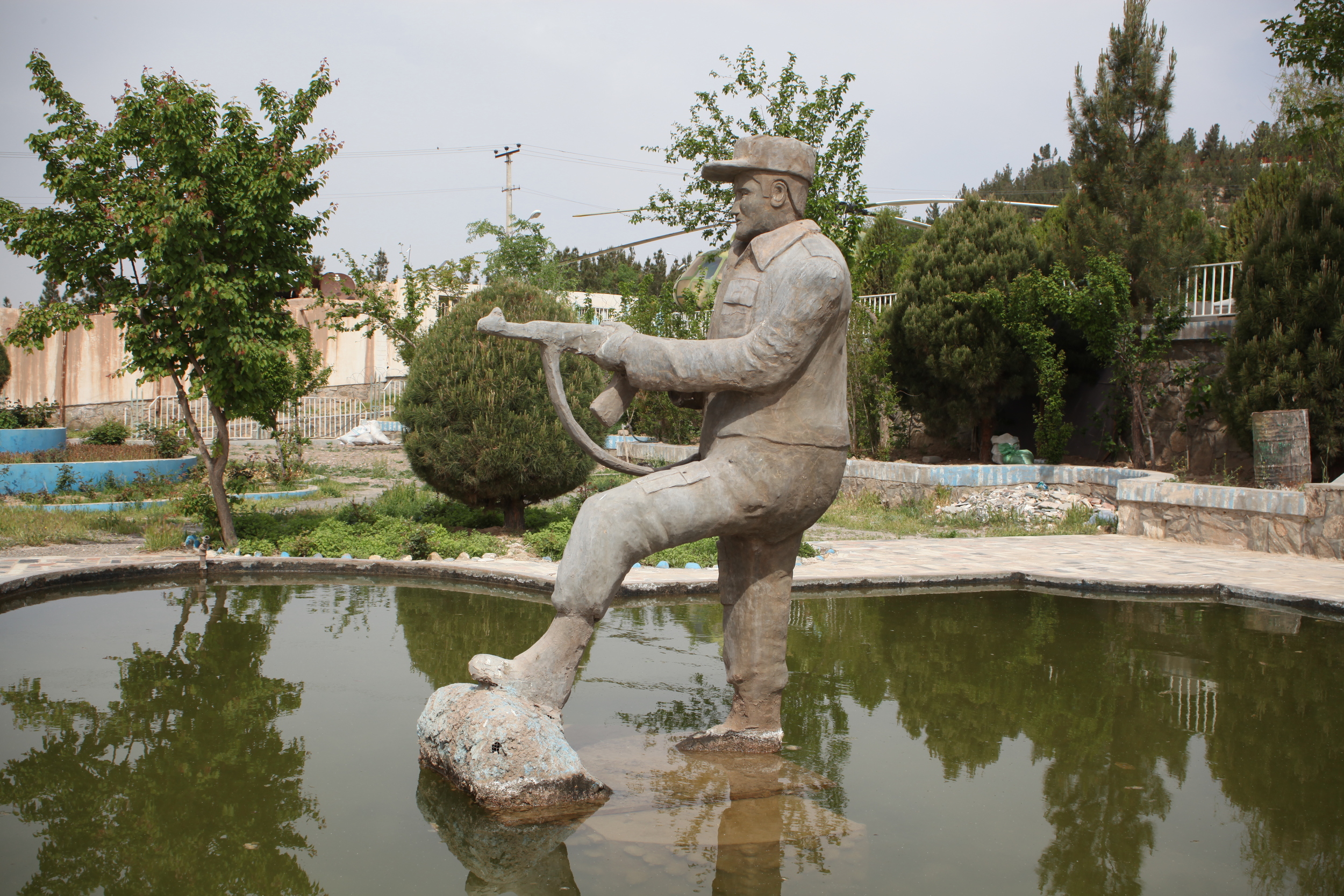
The Jihad Museum is a private museum in the capital city of Herat province. Built by a tribal leader of Herat, the museum grounds are home to a display of military weaponry ranging from the British through the Soviet occupations of Afghanistan. The interior of the museum houses a permanent installation comprised of portraits of martyrs flanking a hallway that leads into a cylindrical structure. Within this structure one can revisit the invasion through a panoramic painting and attendant terra cotta sculptures commemorating the day the communist forces invaded the city.
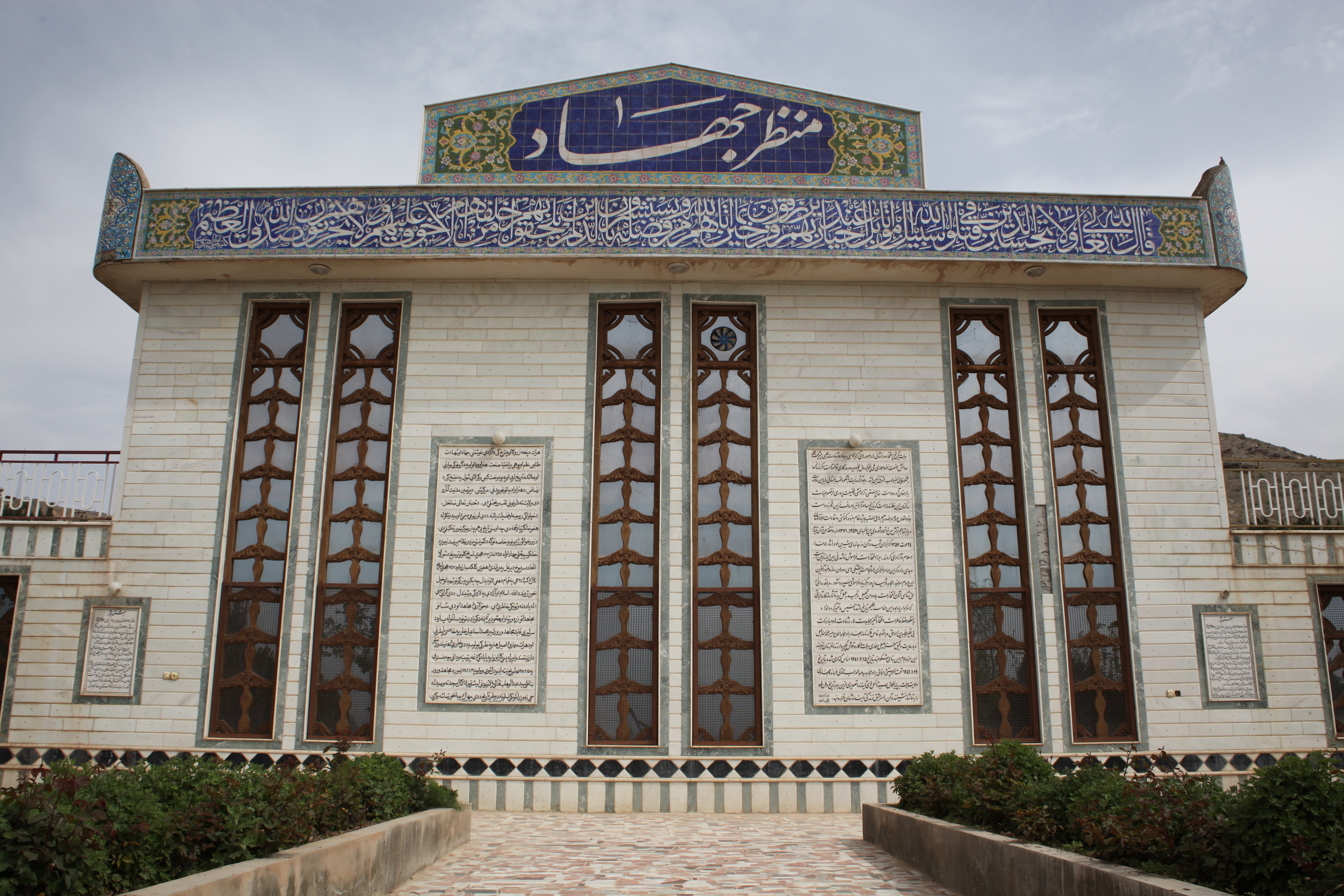
The Jihad Museum is a private museum in the capital city of Herat province. Built by a tribal leader of Herat, the museum grounds are home to a display of military weaponry ranging from the British through the Soviet occupations of Afghanistan. The interior of the museum houses a permanent installation comprised of portraits of martyrs flanking a hallway that leads into a cylindrical structure. Within this structure one can revisit the invasion through a panoramic painting and attendant terra cotta sculptures commemorating the day the communist forces invaded the city.
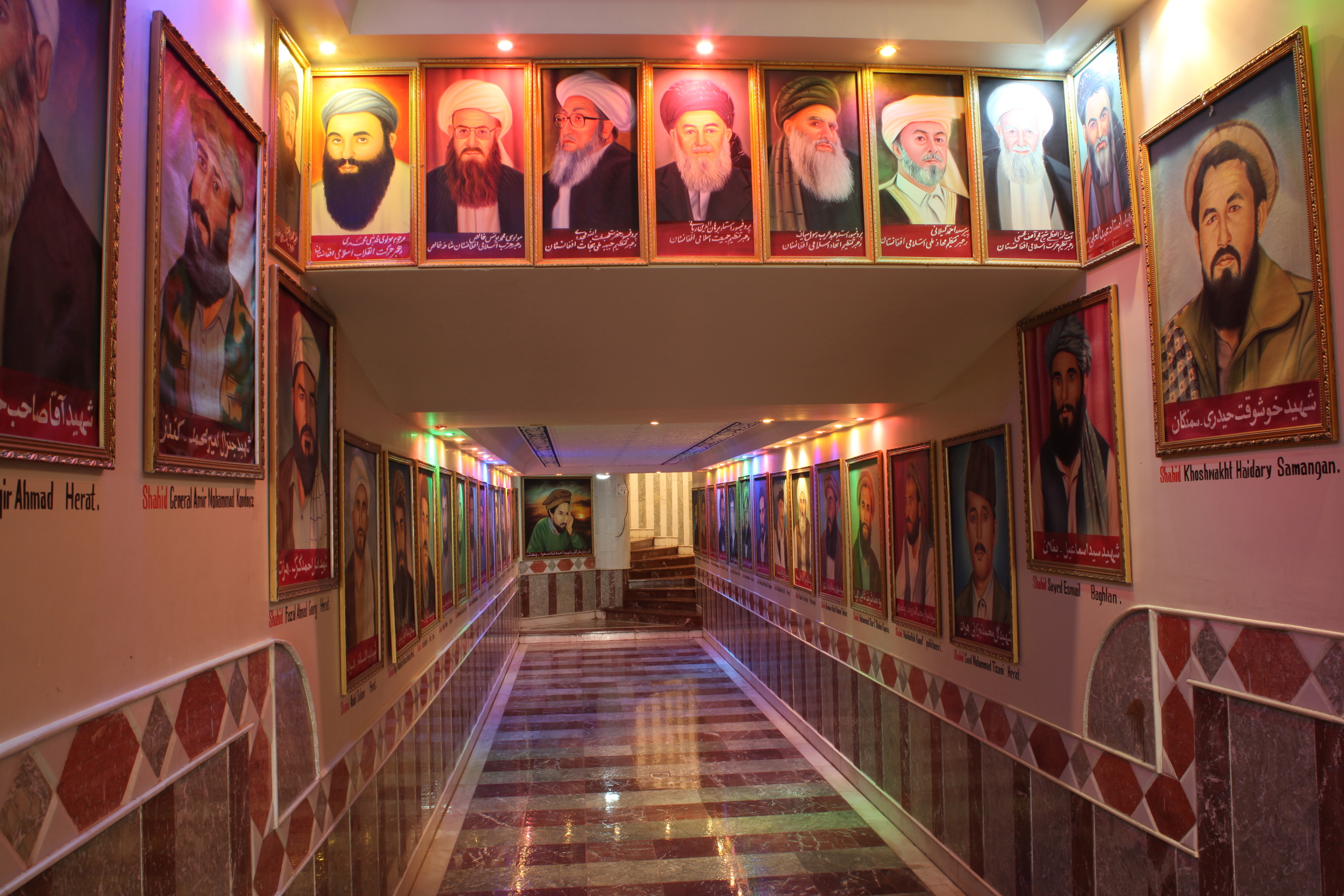
The Jihad Museum is a private museum in the capital city of Herat province. Built by a tribal leader of Herat, the museum grounds are home to a display of military weaponry ranging from the British through the Soviet occupations of Afghanistan. The interior of the museum houses a permanent installation comprised of portraits of martyrs flanking a hallway that leads into a cylindrical structure. Within this structure one can revisit the invasion through a panoramic painting and attendant terra cotta sculptures commemorating the day the communist forces invaded the city.

The Jihad Museum is a private museum in the capital city of Herat province. Built by a tribal leader of Herat, the museum grounds are home to a display of military weaponry ranging from the British through the Soviet occupations of Afghanistan. The interior of the museum houses a permanent installation comprised of portraits of martyrs flanking a hallway that leads into a cylindrical structure. Within this structure one can revisit the invasion through a panoramic painting and attendant terra cotta sculptures commemorating the day the communist forces invaded the city.
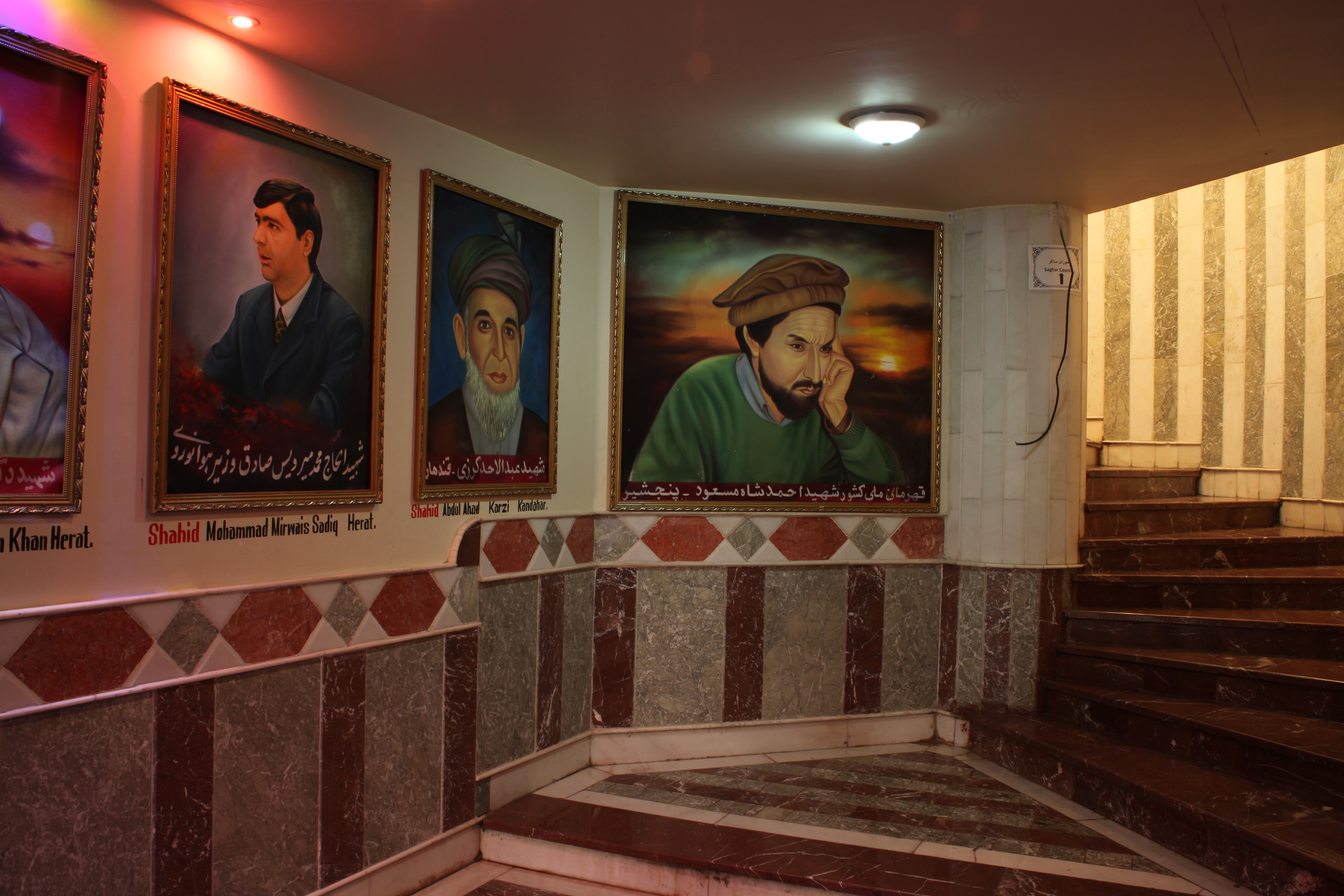
The Jihad Museum is a private museum in the capital city of Herat province. Built by a tribal leader of Herat, the museum grounds are home to a display of military weaponry ranging from the British through the Soviet occupations of Afghanistan. The interior of the museum houses a permanent installation comprised of portraits of martyrs flanking a hallway that leads into a cylindrical structure. Within this structure one can revisit the invasion through a panoramic painting and attendant terra cotta sculptures commemorating the day the communist forces invaded the city.
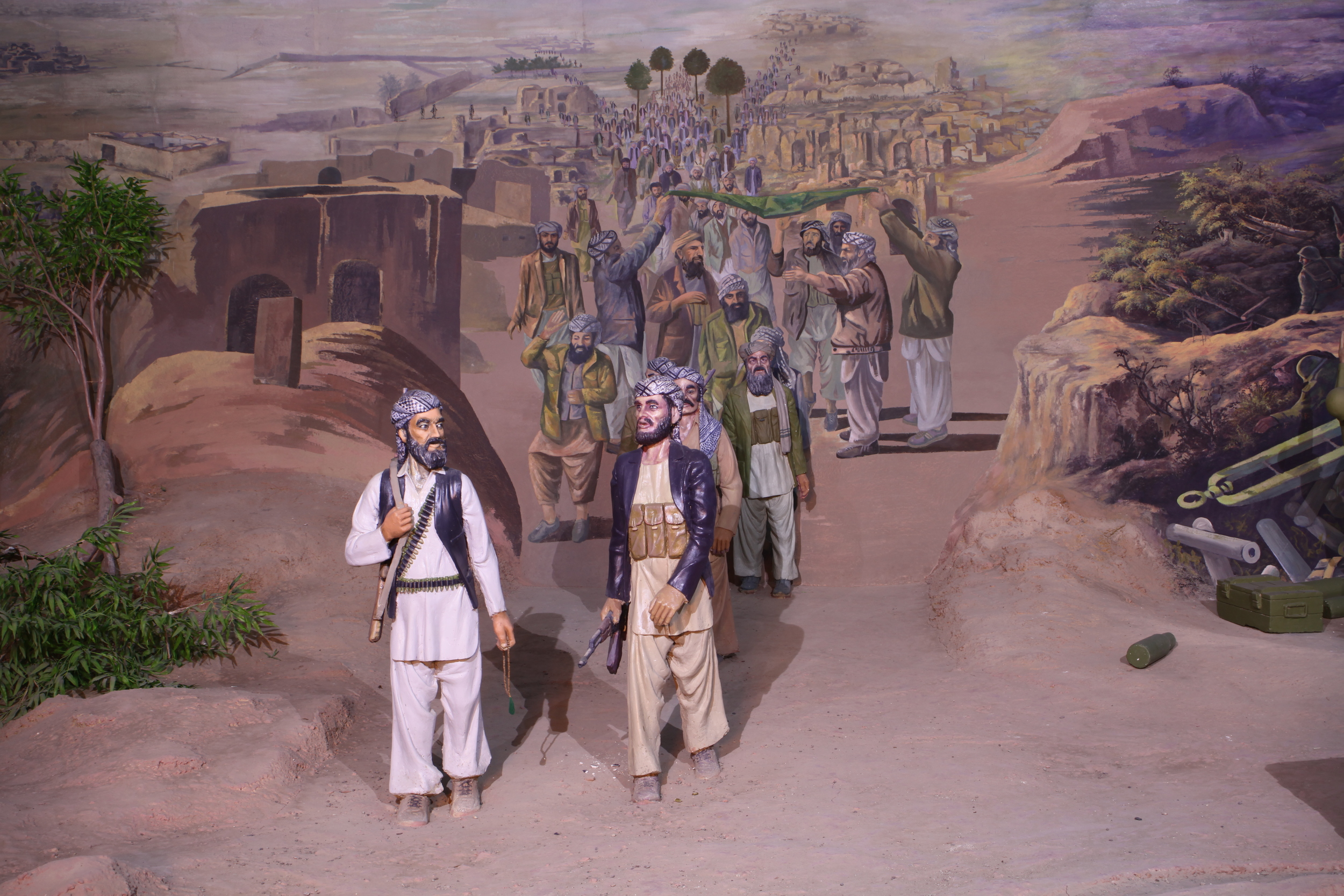
The Jihad Museum is a private museum in the capital city of Herat province. Built by a tribal leader of Herat, the museum grounds are home to a display of military weaponry ranging from the British through the Soviet occupations of Afghanistan. The interior of the museum houses a permanent installation comprised of portraits of martyrs flanking a hallway that leads into a cylindrical structure. Within this structure one can revisit the invasion through a panoramic painting and attendant terra cotta sculptures commemorating the day the communist forces invaded the city.
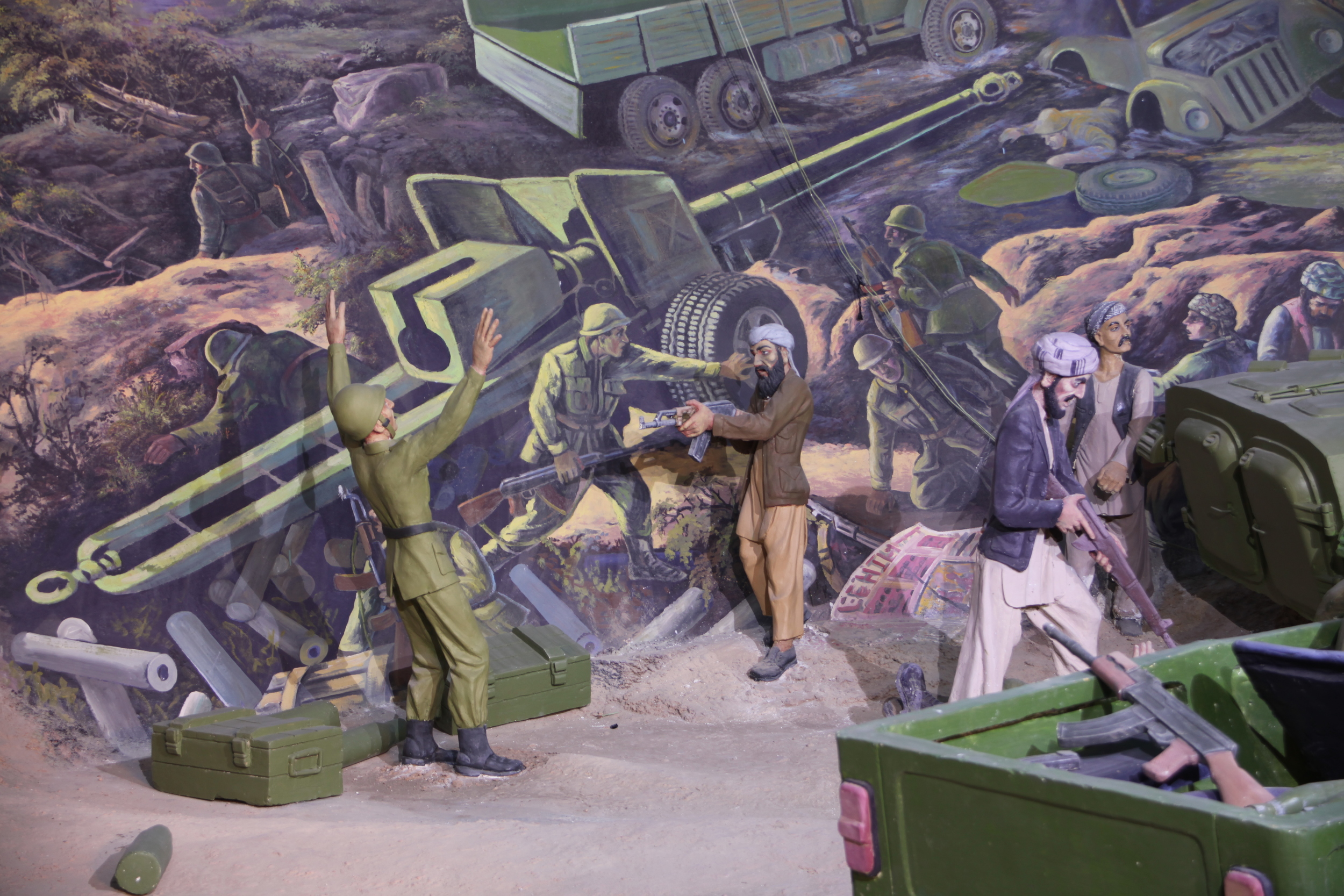
The Jihad Museum is a private museum in the capital city of Herat province. Built by a tribal leader of Herat, the museum grounds are home to a display of military weaponry ranging from the British through the Soviet occupations of Afghanistan. The interior of the museum houses a permanent installation comprised of portraits of martyrs flanking a hallway that leads into a cylindrical structure. Within this structure one can revisit the invasion through a panoramic painting and attendant terra cotta sculptures commemorating the day the communist forces invaded the city.
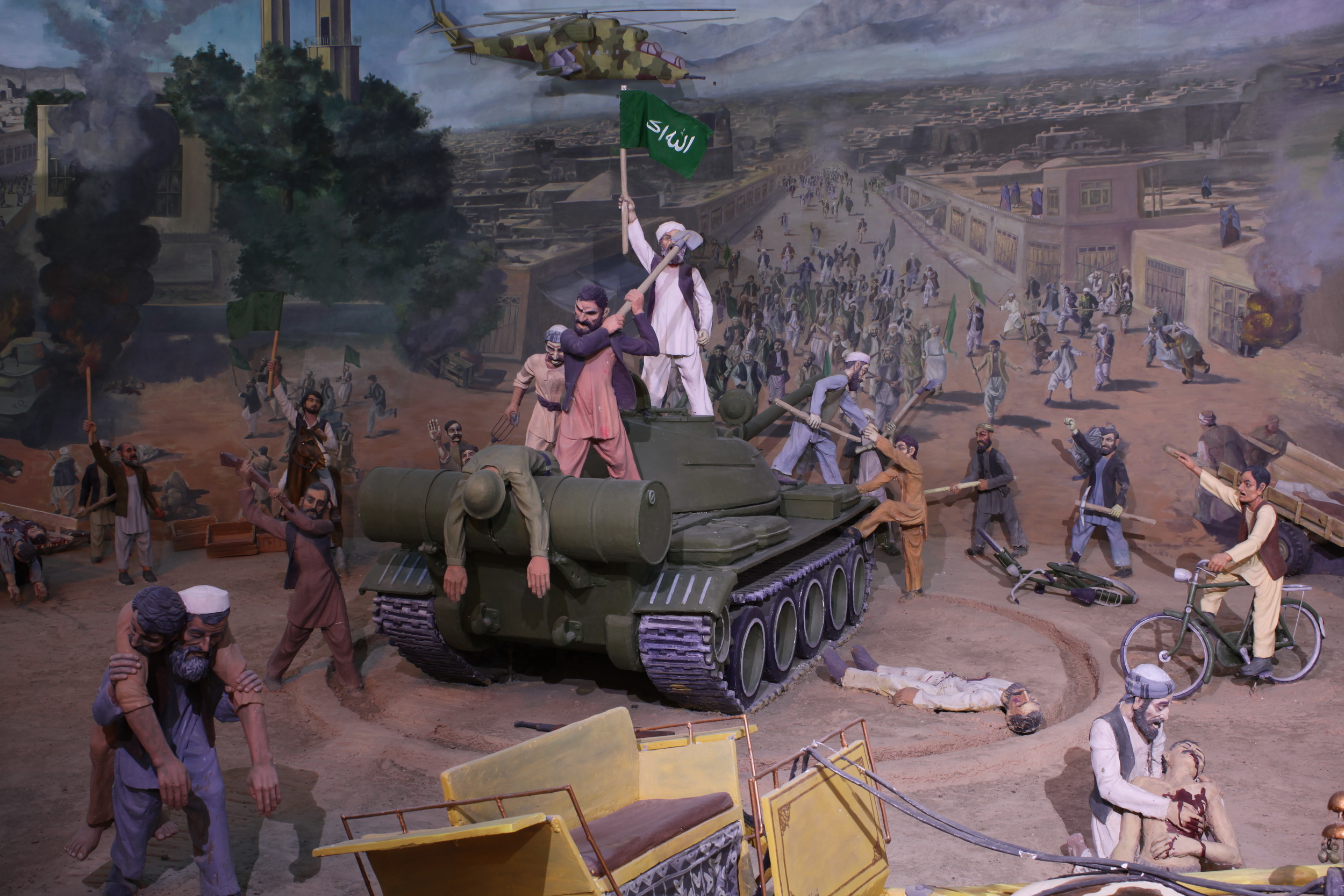
The Jihad Museum is a private museum in the capital city of Herat province. Built by a tribal leader of Herat, the museum grounds are home to a display of military weaponry ranging from the British through the Soviet occupations of Afghanistan. The interior of the museum houses a permanent installation comprised of portraits of martyrs flanking a hallway that leads into a cylindrical structure. Within this structure one can revisit the invasion through a panoramic painting and attendant terra cotta sculptures commemorating the day the communist forces invaded the city.
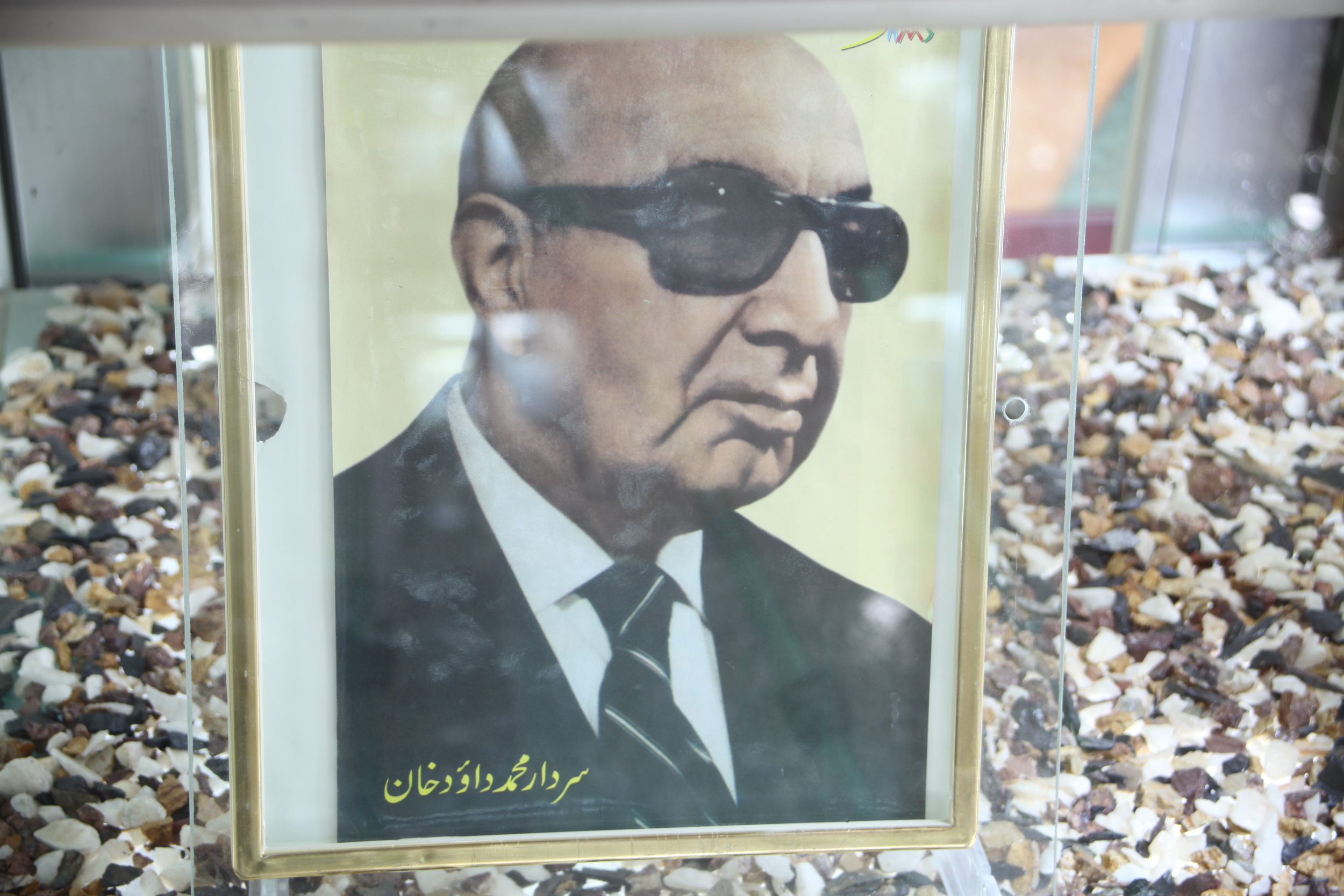
The Jihad Museum is a private museum in the capital city of Herat province. Built by a tribal leader of Herat, the museum grounds are home to a display of military weaponry ranging from the British through the Soviet occupations of Afghanistan. The interior of the museum houses a permanent installation comprised of portraits of martyrs flanking a hallway that leads into a cylindrical structure. Within this structure one can revisit the invasion through a panoramic painting and attendant terra cotta sculptures commemorating the day the communist forces invaded the city.
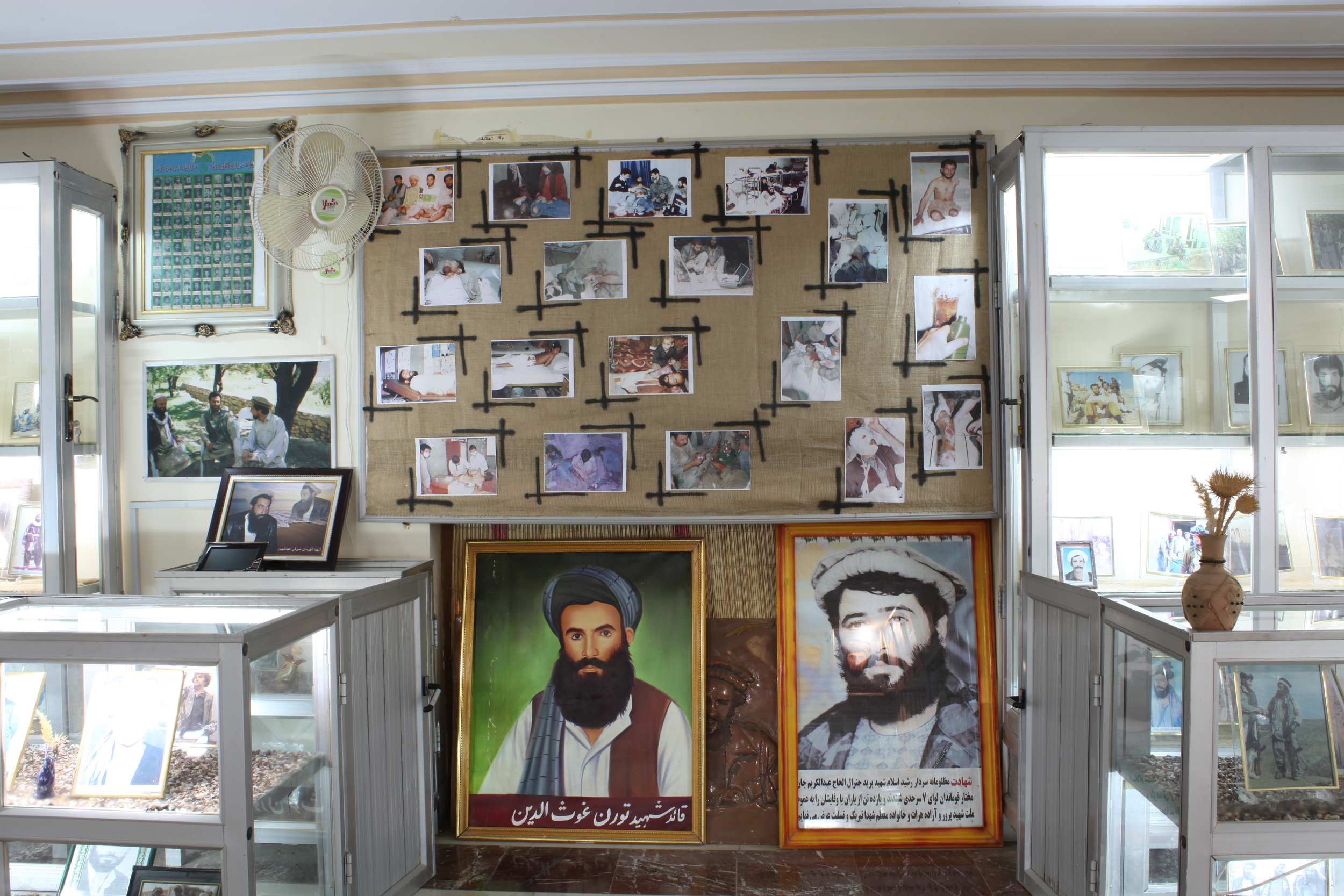
The Jihad Museum is a private museum in the capital city of Herat province. Built by a tribal leader of Herat, the museum grounds are home to a display of military weaponry ranging from the British through the Soviet occupations of Afghanistan. The interior of the museum houses a permanent installation comprised of portraits of martyrs flanking a hallway that leads into a cylindrical structure. Within this structure one can revisit the invasion through a panoramic painting and attendant terra cotta sculptures commemorating the day the communist forces invaded the city.
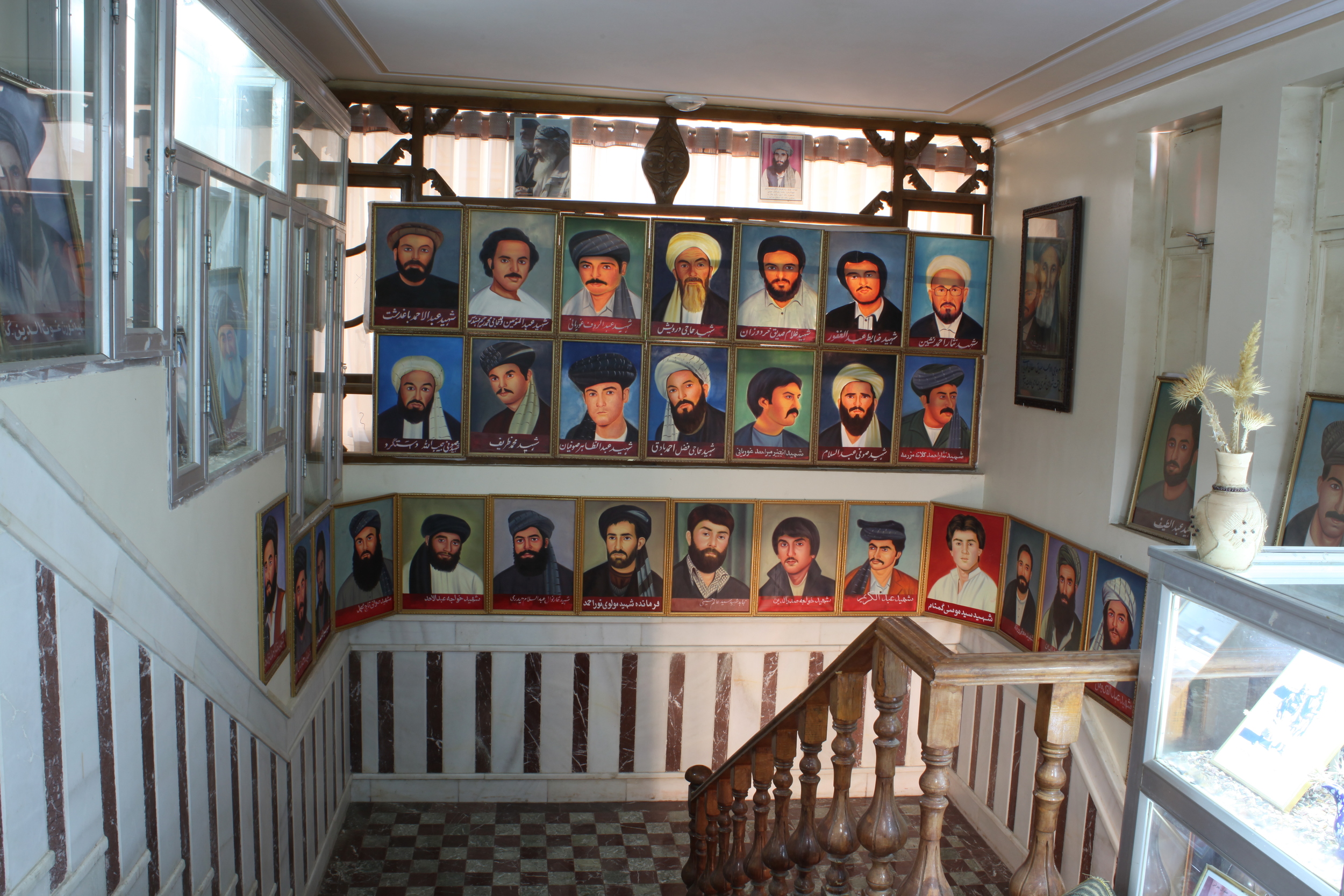
The Jihad Museum is a private museum in the capital city of Herat province. Built by a tribal leader of Herat, the museum grounds are home to a display of military weaponry ranging from the British through the Soviet occupations of Afghanistan. The interior of the museum houses a permanent installation comprised of portraits of martyrs flanking a hallway that leads into a cylindrical structure. Within this structure one can revisit the invasion through a panoramic painting and attendant terra cotta sculptures commemorating the day the communist forces invaded the city.
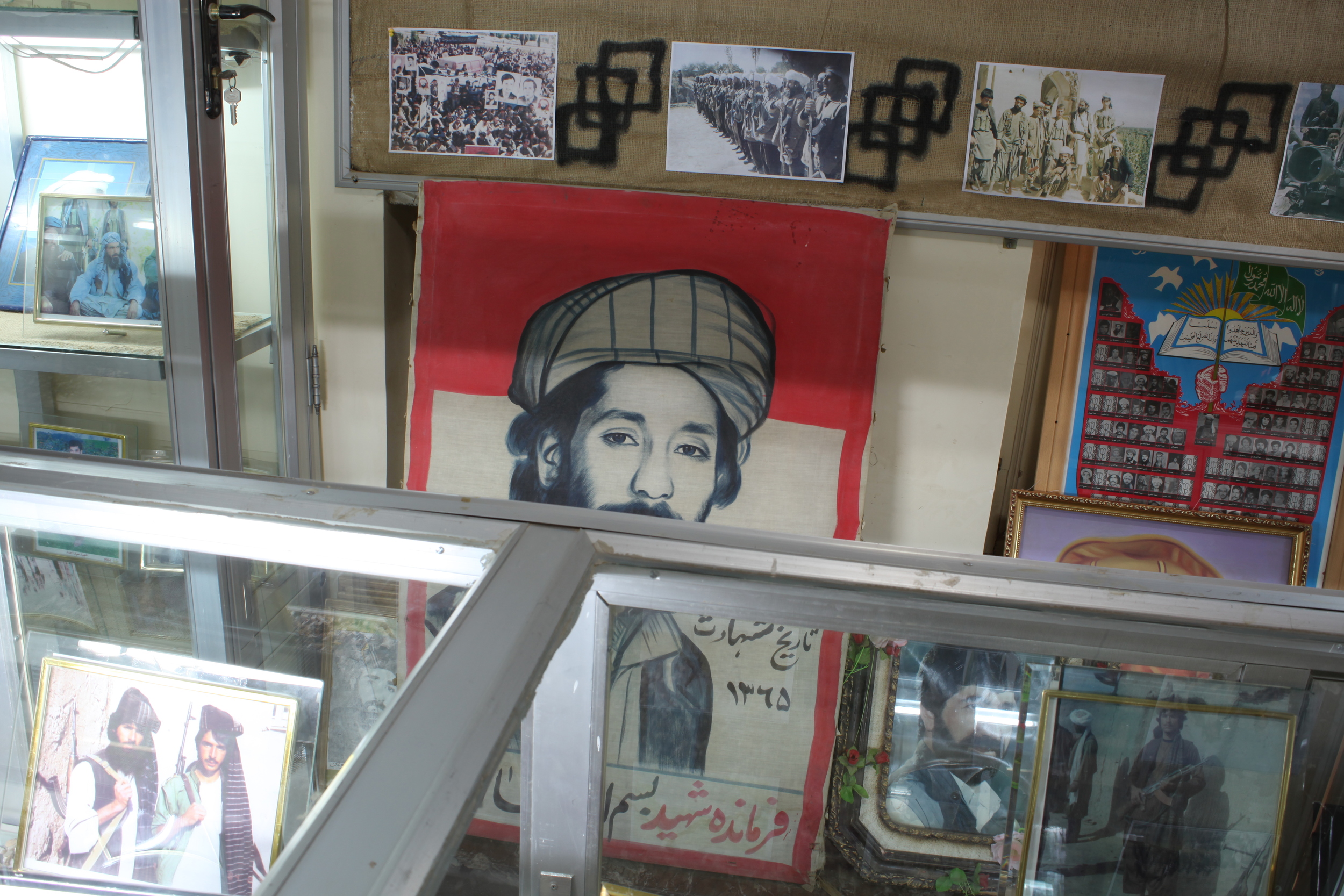
The Jihad Museum is a private museum in the capital city of Herat province. Built by a tribal leader of Herat, the museum grounds are home to a display of military weaponry ranging from the British through the Soviet occupations of Afghanistan. The interior of the museum houses a permanent installation comprised of portraits of martyrs flanking a hallway that leads into a cylindrical structure. Within this structure one can revisit the invasion through a panoramic painting and attendant terra cotta sculptures commemorating the day the communist forces invaded the city.
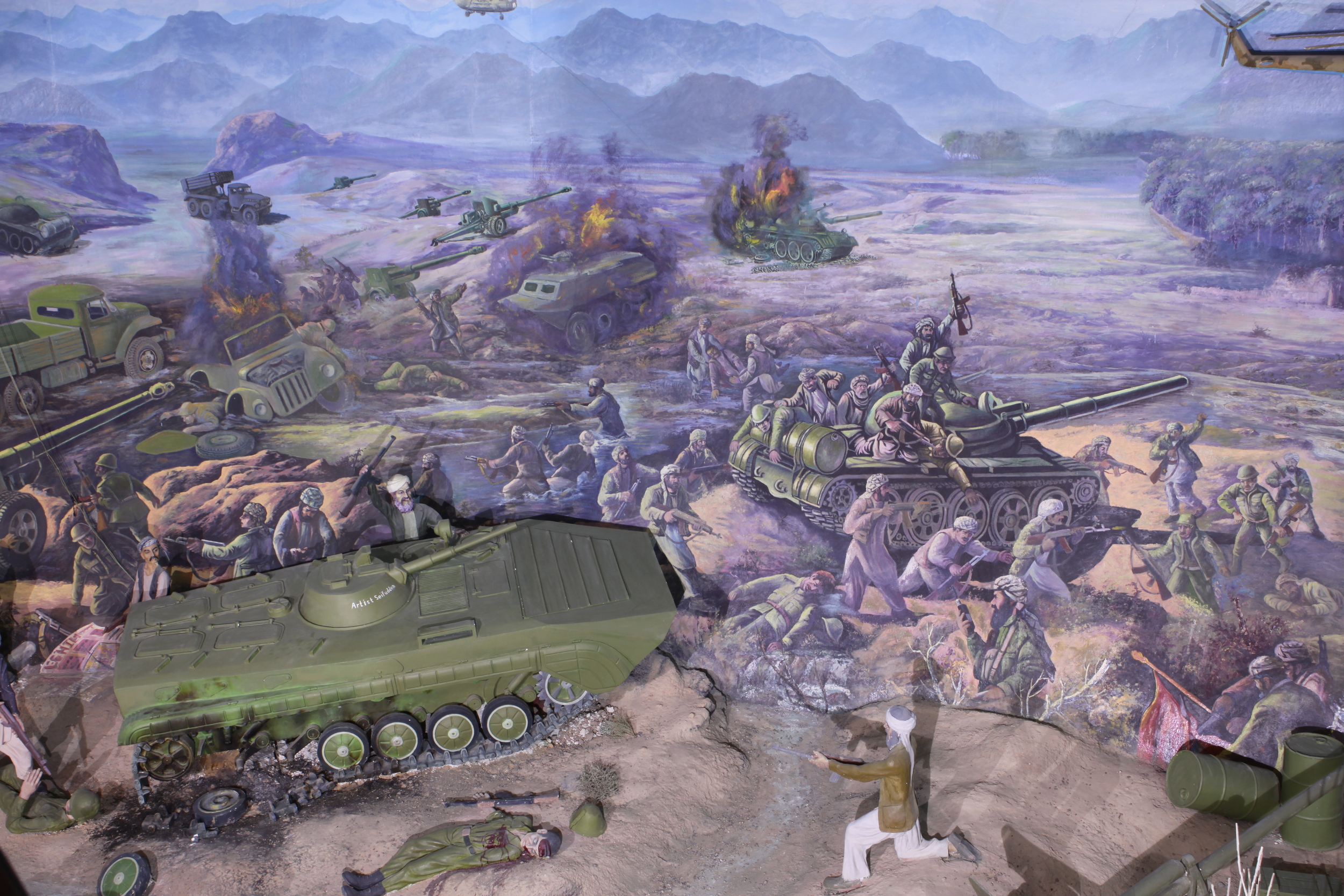
The Jihad Museum is a private museum in the capital city of Herat province. Built by a tribal leader of Herat, the museum grounds are home to a display of military weaponry ranging from the British through the Soviet occupations of Afghanistan. The interior of the museum houses a permanent installation comprised of portraits of martyrs flanking a hallway that leads into a cylindrical structure. Within this structure one can revisit the invasion through a panoramic painting and attendant terra cotta sculptures commemorating the day the communist forces invaded the city.
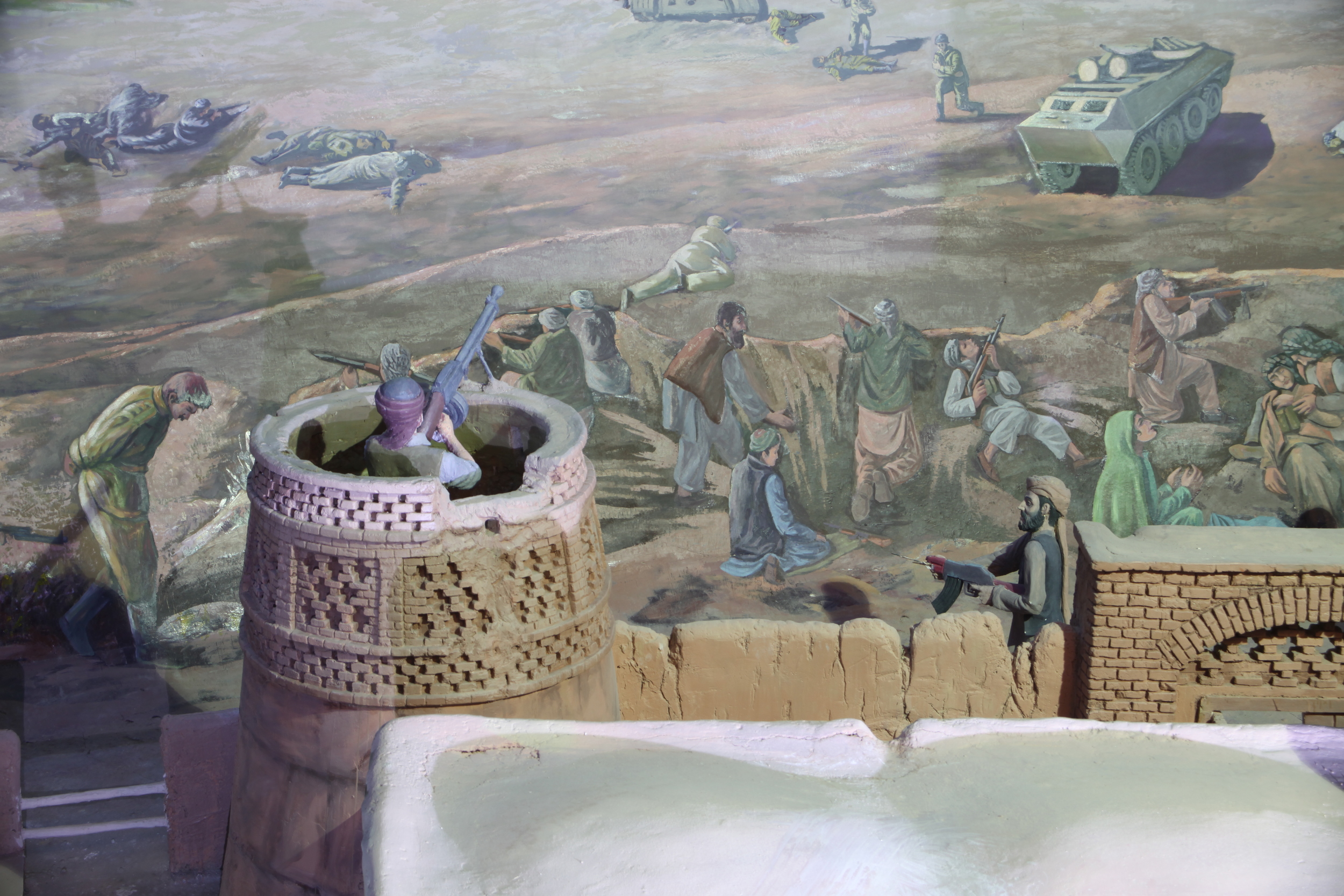
The Jihad Museum is a private museum in the capital city of Herat province. Built by a tribal leader of Herat, the museum grounds are home to a display of military weaponry ranging from the British through the Soviet occupations of Afghanistan. The interior of the museum houses a permanent installation comprised of portraits of martyrs flanking a hallway that leads into a cylindrical structure. Within this structure one can revisit the invasion through a panoramic painting and attendant terra cotta sculptures commemorating the day the communist forces invaded the city.
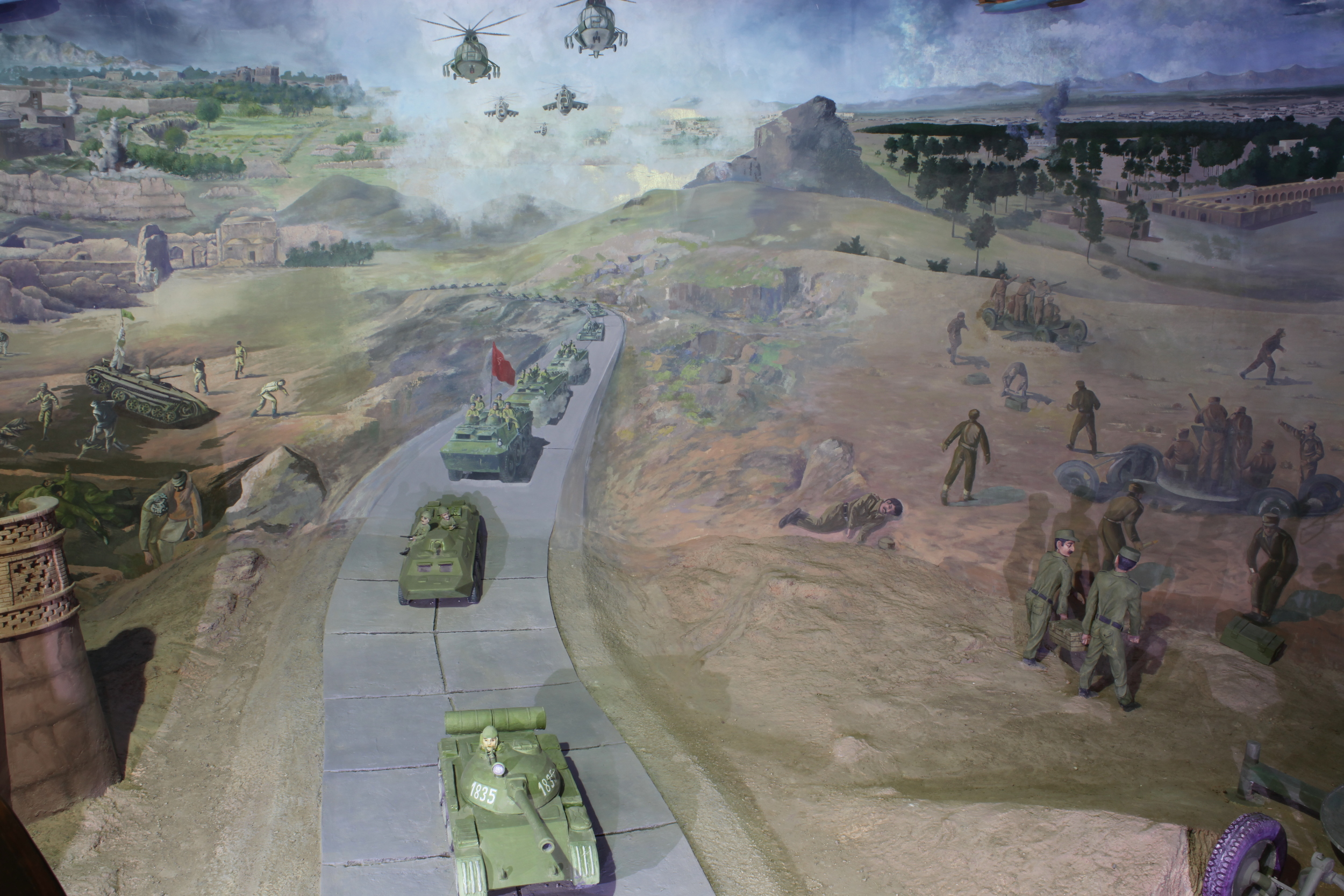
The Jihad Museum is a private museum in the capital city of Herat province. Built by a tribal leader of Herat, the museum grounds are home to a display of military weaponry ranging from the British through the Soviet occupations of Afghanistan. The interior of the museum houses a permanent installation comprised of portraits of martyrs flanking a hallway that leads into a cylindrical structure. Within this structure one can revisit the invasion through a panoramic painting and attendant terra cotta sculptures commemorating the day the communist forces invaded the city.
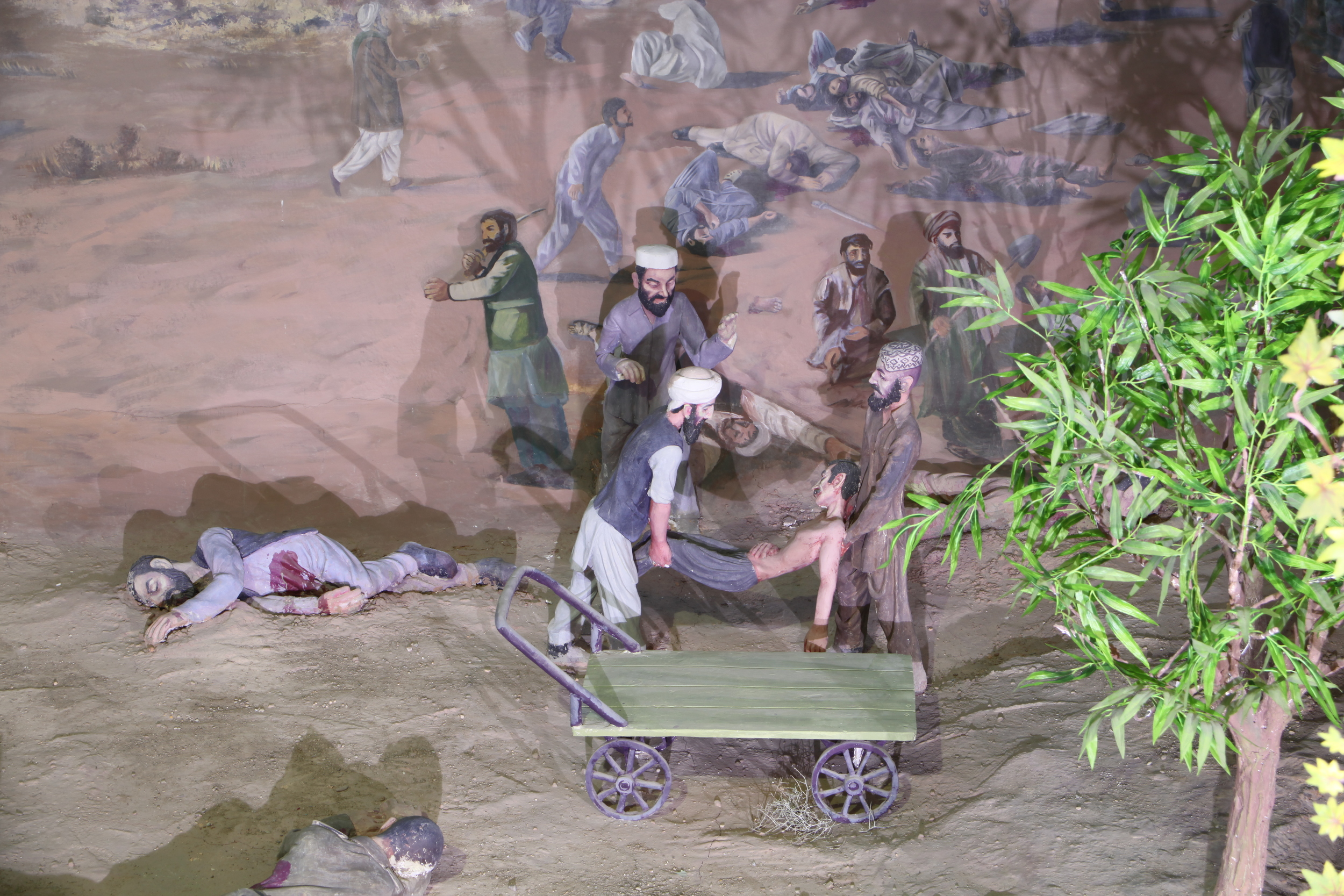
The Jihad Museum is a private museum in the capital city of Herat province. Built by a tribal leader of Herat, the museum grounds are home to a display of military weaponry ranging from the British through the Soviet occupations of Afghanistan. The interior of the museum houses a permanent installation comprised of portraits of martyrs flanking a hallway that leads into a cylindrical structure. Within this structure one can revisit the invasion through a panoramic painting and attendant terra cotta sculptures commemorating the day the communist forces invaded the city.
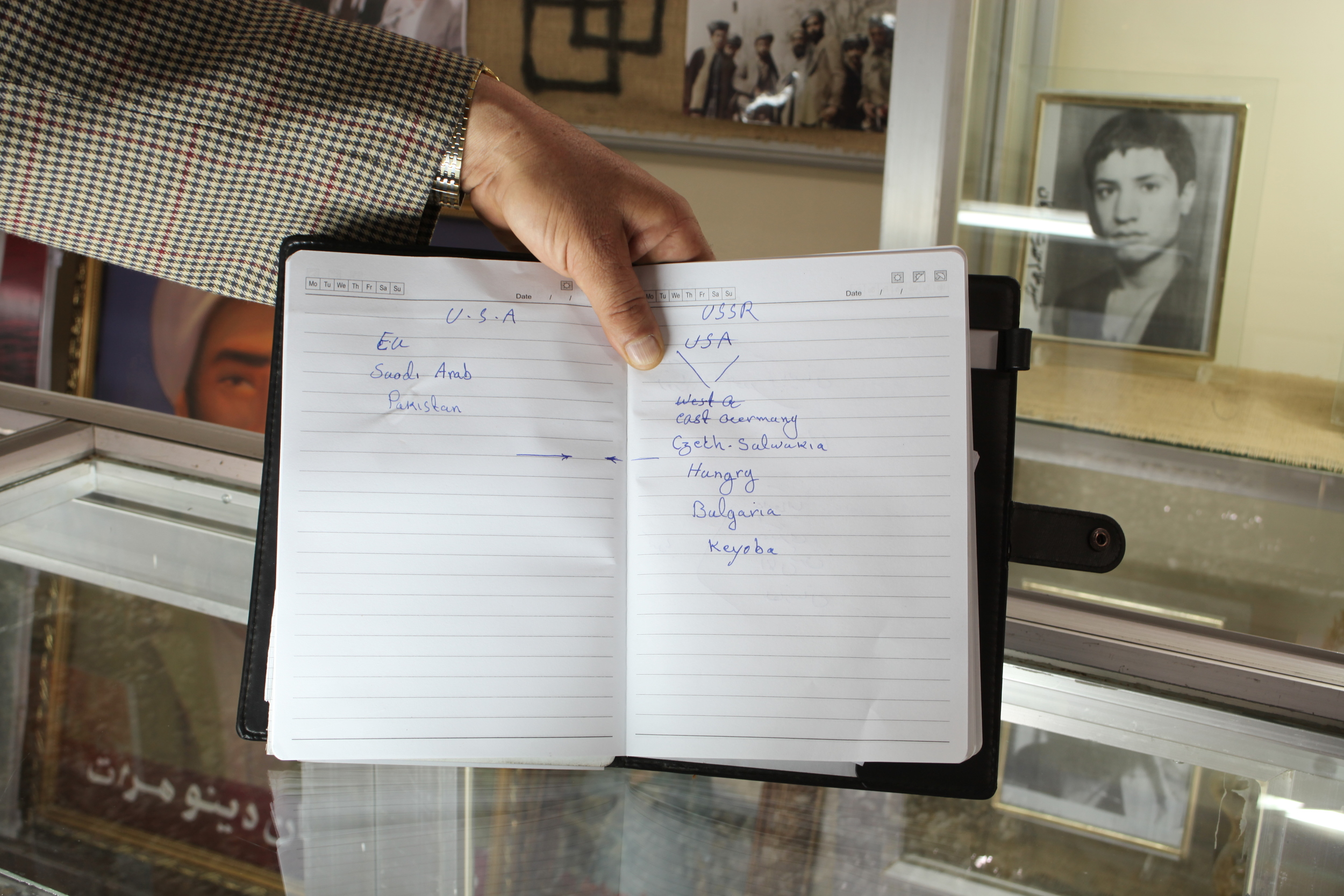
The Jihad Museum is a private museum in the capital city of Herat province. Built by a tribal leader of Herat, the museum grounds are home to a display of military weaponry ranging from the British through the Soviet occupations of Afghanistan. The interior of the museum houses a permanent installation comprised of portraits of martyrs flanking a hallway that leads into a cylindrical structure. Within this structure one can revisit the invasion through a panoramic painting and attendant terra cotta sculptures commemorating the day the communist forces invaded the city.


















The Jihad Museum is a private museum in the capital city of Herat province. Built by a tribal leader of Herat, the museum grounds are home to a display of military weaponry ranging from the British through the Soviet occupations of Afghanistan. The interior of the museum houses a permanent installation comprised of portraits of martyrs flanking a hallway that leads into a cylindrical structure. Within this structure one can revisit the invasion through a panoramic painting and attendant terra cotta sculptures commemorating the day the communist forces invaded the city.
The Jihad Museum is a private museum in the capital city of Herat province. Built by a tribal leader of Herat, the museum grounds are home to a display of military weaponry ranging from the British through the Soviet occupations of Afghanistan. The interior of the museum houses a permanent installation comprised of portraits of martyrs flanking a hallway that leads into a cylindrical structure. Within this structure one can revisit the invasion through a panoramic painting and attendant terra cotta sculptures commemorating the day the communist forces invaded the city.
The Jihad Museum is a private museum in the capital city of Herat province. Built by a tribal leader of Herat, the museum grounds are home to a display of military weaponry ranging from the British through the Soviet occupations of Afghanistan. The interior of the museum houses a permanent installation comprised of portraits of martyrs flanking a hallway that leads into a cylindrical structure. Within this structure one can revisit the invasion through a panoramic painting and attendant terra cotta sculptures commemorating the day the communist forces invaded the city.
The Jihad Museum is a private museum in the capital city of Herat province. Built by a tribal leader of Herat, the museum grounds are home to a display of military weaponry ranging from the British through the Soviet occupations of Afghanistan. The interior of the museum houses a permanent installation comprised of portraits of martyrs flanking a hallway that leads into a cylindrical structure. Within this structure one can revisit the invasion through a panoramic painting and attendant terra cotta sculptures commemorating the day the communist forces invaded the city.
The Jihad Museum is a private museum in the capital city of Herat province. Built by a tribal leader of Herat, the museum grounds are home to a display of military weaponry ranging from the British through the Soviet occupations of Afghanistan. The interior of the museum houses a permanent installation comprised of portraits of martyrs flanking a hallway that leads into a cylindrical structure. Within this structure one can revisit the invasion through a panoramic painting and attendant terra cotta sculptures commemorating the day the communist forces invaded the city.
The Jihad Museum is a private museum in the capital city of Herat province. Built by a tribal leader of Herat, the museum grounds are home to a display of military weaponry ranging from the British through the Soviet occupations of Afghanistan. The interior of the museum houses a permanent installation comprised of portraits of martyrs flanking a hallway that leads into a cylindrical structure. Within this structure one can revisit the invasion through a panoramic painting and attendant terra cotta sculptures commemorating the day the communist forces invaded the city.
The Jihad Museum is a private museum in the capital city of Herat province. Built by a tribal leader of Herat, the museum grounds are home to a display of military weaponry ranging from the British through the Soviet occupations of Afghanistan. The interior of the museum houses a permanent installation comprised of portraits of martyrs flanking a hallway that leads into a cylindrical structure. Within this structure one can revisit the invasion through a panoramic painting and attendant terra cotta sculptures commemorating the day the communist forces invaded the city.
The Jihad Museum is a private museum in the capital city of Herat province. Built by a tribal leader of Herat, the museum grounds are home to a display of military weaponry ranging from the British through the Soviet occupations of Afghanistan. The interior of the museum houses a permanent installation comprised of portraits of martyrs flanking a hallway that leads into a cylindrical structure. Within this structure one can revisit the invasion through a panoramic painting and attendant terra cotta sculptures commemorating the day the communist forces invaded the city.
The Jihad Museum is a private museum in the capital city of Herat province. Built by a tribal leader of Herat, the museum grounds are home to a display of military weaponry ranging from the British through the Soviet occupations of Afghanistan. The interior of the museum houses a permanent installation comprised of portraits of martyrs flanking a hallway that leads into a cylindrical structure. Within this structure one can revisit the invasion through a panoramic painting and attendant terra cotta sculptures commemorating the day the communist forces invaded the city.
The Jihad Museum is a private museum in the capital city of Herat province. Built by a tribal leader of Herat, the museum grounds are home to a display of military weaponry ranging from the British through the Soviet occupations of Afghanistan. The interior of the museum houses a permanent installation comprised of portraits of martyrs flanking a hallway that leads into a cylindrical structure. Within this structure one can revisit the invasion through a panoramic painting and attendant terra cotta sculptures commemorating the day the communist forces invaded the city.
The Jihad Museum is a private museum in the capital city of Herat province. Built by a tribal leader of Herat, the museum grounds are home to a display of military weaponry ranging from the British through the Soviet occupations of Afghanistan. The interior of the museum houses a permanent installation comprised of portraits of martyrs flanking a hallway that leads into a cylindrical structure. Within this structure one can revisit the invasion through a panoramic painting and attendant terra cotta sculptures commemorating the day the communist forces invaded the city.
The Jihad Museum is a private museum in the capital city of Herat province. Built by a tribal leader of Herat, the museum grounds are home to a display of military weaponry ranging from the British through the Soviet occupations of Afghanistan. The interior of the museum houses a permanent installation comprised of portraits of martyrs flanking a hallway that leads into a cylindrical structure. Within this structure one can revisit the invasion through a panoramic painting and attendant terra cotta sculptures commemorating the day the communist forces invaded the city.
The Jihad Museum is a private museum in the capital city of Herat province. Built by a tribal leader of Herat, the museum grounds are home to a display of military weaponry ranging from the British through the Soviet occupations of Afghanistan. The interior of the museum houses a permanent installation comprised of portraits of martyrs flanking a hallway that leads into a cylindrical structure. Within this structure one can revisit the invasion through a panoramic painting and attendant terra cotta sculptures commemorating the day the communist forces invaded the city.
The Jihad Museum is a private museum in the capital city of Herat province. Built by a tribal leader of Herat, the museum grounds are home to a display of military weaponry ranging from the British through the Soviet occupations of Afghanistan. The interior of the museum houses a permanent installation comprised of portraits of martyrs flanking a hallway that leads into a cylindrical structure. Within this structure one can revisit the invasion through a panoramic painting and attendant terra cotta sculptures commemorating the day the communist forces invaded the city.
The Jihad Museum is a private museum in the capital city of Herat province. Built by a tribal leader of Herat, the museum grounds are home to a display of military weaponry ranging from the British through the Soviet occupations of Afghanistan. The interior of the museum houses a permanent installation comprised of portraits of martyrs flanking a hallway that leads into a cylindrical structure. Within this structure one can revisit the invasion through a panoramic painting and attendant terra cotta sculptures commemorating the day the communist forces invaded the city.
The Jihad Museum is a private museum in the capital city of Herat province. Built by a tribal leader of Herat, the museum grounds are home to a display of military weaponry ranging from the British through the Soviet occupations of Afghanistan. The interior of the museum houses a permanent installation comprised of portraits of martyrs flanking a hallway that leads into a cylindrical structure. Within this structure one can revisit the invasion through a panoramic painting and attendant terra cotta sculptures commemorating the day the communist forces invaded the city.
The Jihad Museum is a private museum in the capital city of Herat province. Built by a tribal leader of Herat, the museum grounds are home to a display of military weaponry ranging from the British through the Soviet occupations of Afghanistan. The interior of the museum houses a permanent installation comprised of portraits of martyrs flanking a hallway that leads into a cylindrical structure. Within this structure one can revisit the invasion through a panoramic painting and attendant terra cotta sculptures commemorating the day the communist forces invaded the city.
The Jihad Museum is a private museum in the capital city of Herat province. Built by a tribal leader of Herat, the museum grounds are home to a display of military weaponry ranging from the British through the Soviet occupations of Afghanistan. The interior of the museum houses a permanent installation comprised of portraits of martyrs flanking a hallway that leads into a cylindrical structure. Within this structure one can revisit the invasion through a panoramic painting and attendant terra cotta sculptures commemorating the day the communist forces invaded the city.